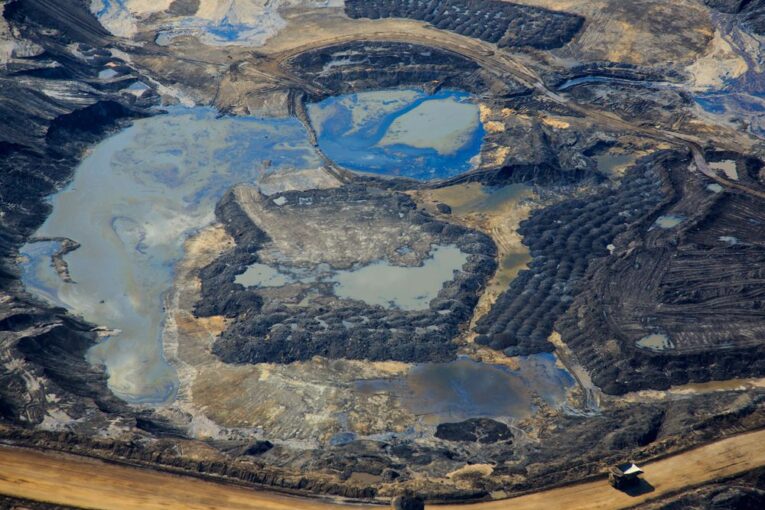
Spending in the Canadian oilsands has been stuck in neutral, or been in reverse, for much of the past two years.
Today, producers are carefully opening up the throttle by as much as 25 per cent as crude prices surpass US$80 a barrel and additional pipeline capacity is now online.
Canadian Natural Resources announced Tuesday it will increase its capital spending program to $4.3 billion this year, a 25 per cent bump from 2021 levels.
After years of shrinking budgets, it’s a welcome sign as most of the country’s largest oilsands producers are planning for some additional investment in 2022.
The money will account for inflation, help reduce long-term costs and shift projects closer to nameplate production capacity, as well as incrementally raise output.
“We are seeing a favourable outlook for oilsands that we haven’t seen, certainly in years,” Ben Brunnen, vice-president of the Canadian Association of Petroleum Producers, said Wednesday.
Canadian oilsands spending levels plunged after crude prices crumpled more than seven years ago. Pipeline constraints also squeezed the sector and the Alberta government introduced mandatory production quotas in 2019.
All of these forces left big spenders on the sidelines, at least when it came to advancing major new production projects.
Total oilsands investment tumbled to $7.3 billion in 2020 from a peak of nearly $34 billion in 2014, according to ARC Energy Research Institute. As oil prices improved, investment inched up slightly last year.
Based on guidance from public companies, oilsands producers are expected to increase spending by about 25 per cent this year, while expenditures on conventional oil and natural gas will rise by 18 per cent, said Jackie Forrest, ARC Energy executive director.
“It’s interesting to see some increase in the oilsands. They’ve been basically investing very little relative to their cash flow,” said Forrest.
“Think about where we were at this time last year. Oil prices were highly uncertain and still very low. Now there is more confidence, obviously.”
Benchmark oil prices have risen almost 10 per cent since the start of January, with West Texas Intermediate crude closing Wednesday at US$82.64 a barrel.
Even with concerns about the effect of the Omicron variant, a report by BMO this week said global oil demand could increase by 4.6 million barrels per day (bpd) this year and top more than 100 million barrels.
Oilsands companies have seen cash flow levels surge in the past year and are now showing signs of increasing spending, while also returning money to investors.
Imperial Oil said recently it would hike its overall capital and exploration budget by 27 per cent, including its planned downstream spending. Cenovus Energy, MEG Energy and Suncor Energy have each unveiled increases of around 13 per cent.
Global oil investments will jump by seven per cent this year to US$307 billion, consultancy Rystad Energy said in a report this week. In Canada, oilsands capital spending will increase by about 15 to 20 per cent to almost US$7.5 billion this year, said Thomas Liles, an analyst at Rystad.
Rising commodity prices and inflation — affecting the costs of labour, steel and diesel — are all playing a role, he said.
Rystad also expects total oilsands output to increase by about four per cent this year to around 3.3 million bpd.
“The capital programs did remain a little bit conservative last year,” Liles said Wednesday from New York.
“We do expect growth from the oilsands in the short and near term, but the thing to underline is it’s a different kind of growth from what we saw five to 10 years ago.”
New greenfield projects have been shelved, with companies eyeing smaller, incremental expansions with substantially lower capital requirements.
Meanwhile, the completion of Enbridge’s Line 3 replacement project in the United States last fall has relieved the pipeline bottleneck that plagued the industry for years, while construction continues on the Trans Mountain expansion.
The additional capacity allowed the provincial government to let its production curtailment program expire at the end of last month, a policy that placed “a pretty substantial chill on investment in Alberta oilsands,” said Brunnen.
“What we see is some cautious expansion into very targeted areas for strategic growth,” he added.
“We do think the (oilsands capital spending) numbers will be in excess of 20 per cent.”

Canadian Natural anticipates its daily production will average about 1.3 million barrels of oil equivalent (boe) this year, an increase of 60,000 barrels from last year following its acquisition of junior gas producer Storm Resources.
Aside from a base budget of $3.6 million, the Calgary-based company earmarked an additional $700 million in spending for strategic growth. It will add capacity to its thermal oilsands projects and its mining and upgrading assets, increasing output by about 5,000 bpd next year, before climbing to more than 60,000 bpd by mid-decade.
The company will drill 102 thermal oilsands wells this year, an increase from just eight in 2021.
“Through this program, it’s very methodical,” Canadian Natural president Tim McKay told an analysts’ call on Tuesday. “If we decide we want to slow down the drilling activity, we can.”
While incremental spending increases are set to take place, it’s still overshadowed by the massive increase in cash flow that oilsands producers are pumping out thanks to higher commodity prices.
Some companies are spending money on maintenance deferred during the pandemic, while others are dedicating funds to bringing oilsands facilities up to full capacity, such as Suncor Energy increasing output at its Fort Hills mine, noted analyst Phil Skolnick of Eight Capital.
But the ongoing push from investors for producers to return money to shareholders isn’t fading.
“You have a choice as a company. You can grow, but then there’s the type of growth that can be too much . . . or you can pay more dividends, buy back shares,” he said.
“They are doing both.”
Chris Varcoe is a Calgary Herald columnist.
You can read more of the news on source
